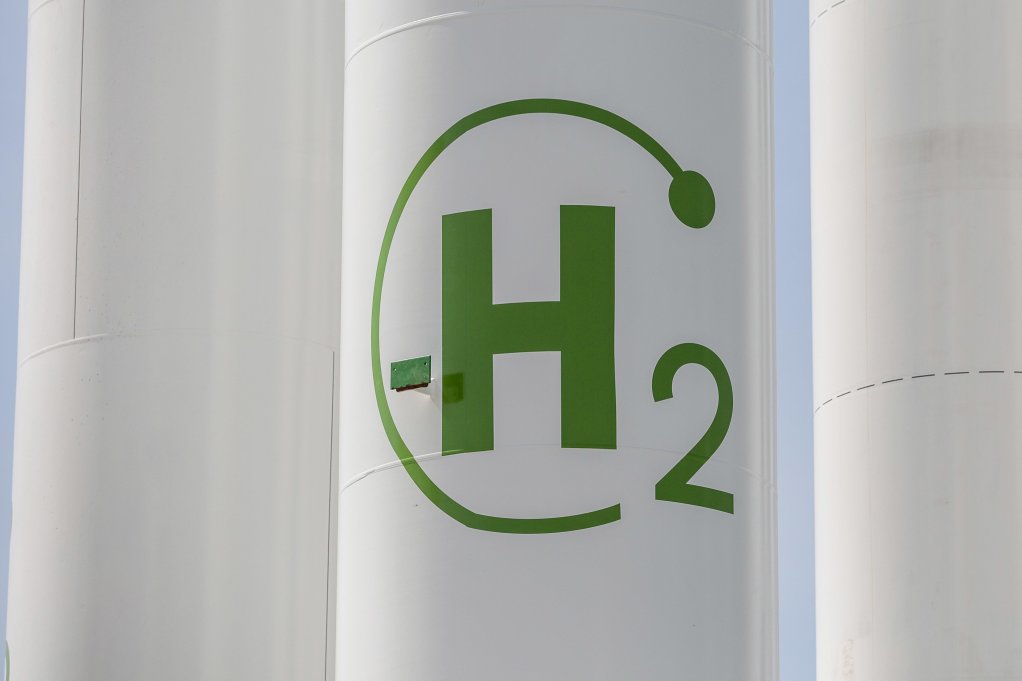South Africa sets sights on $250bn in hydrogen investment
South Africa set its sights on attracting as much as $250-billion into its nascent green hydrogen industry by 2050 to take advantage of abundant solar and wind energy sources.
The industry could create 1.4-million jobs and generate as much as $30-billion in annual revenue by that year, according to Masopha Moshoeshoe, a green economy specialist in the South African Presidency’s investment and infrastructure office.
Green hydrogen, which is made by splitting water using renewable energy, is one of three key ways South Africa is pursuing to shift its economy away from a reliance on coal, which currently accounts for more than 80% of its electricity. The others are developing an electric-vehicle industry and shifting power production to wind and solar power.
The plan, included in a presentation by Moshoeshoe at the COP27 international climate conference in Egypt on Monday, would involve South Africa exporting as much as eight-million tons of the clean-burning fuel and its derivatives by 2050 and satisfying local demand of between two- and five-million tons, he said.
While other African countries such as Morocco and Namibia have already positioned themselves as potential hydrogen producers, Russia’s invasion of Ukraine has increased interest in supply and created more opportunities for cooperation, he said.
The war has driven up natural gas prices and threatened security of supply. Investment funds, governments and utilities are pledging to spend-billions of dollars on markets for the clean fuel.
The potential is for the country to supply between 4% and 8% of the global market for ammonia, which is produced using hydrogen, with a focus on supplying South Korea and Japan, he said.
DAUNTING TASK
Even so, the numbers needed to make the strategy a success are daunting.
Between 140 000 MW and 300 000 MW of renewable-power generation capacity would be needed to supply the industry, compared with the country’s current total power facility capacity of a little over 40 000 MW, the presentation showed.
By 2030 alone, between 6 000 MW and 10 000 MW of dedicated renewable energy plants would need to be built to power 3 000 MW to 5 000 MW of electrolyser capacity, according to figures shown in the presentation. Electrolysers use electricity to make the hydrogen from water.
A number of bilateral negotiations are taking place between South Africa and potential markets, Moshoeshoe said.
Article Enquiry
Email Article
Save Article
Feedback
To advertise email advertising@creamermedia.co.za or click here
Comments
Press Office
Announcements
What's On
Subscribe to improve your user experience...
Option 1 (equivalent of R125 a month):
Receive a weekly copy of Creamer Media's Engineering News & Mining Weekly magazine
(print copy for those in South Africa and e-magazine for those outside of South Africa)
Receive daily email newsletters
Access to full search results
Access archive of magazine back copies
Access to Projects in Progress
Access to ONE Research Report of your choice in PDF format
Option 2 (equivalent of R375 a month):
All benefits from Option 1
PLUS
Access to Creamer Media's Research Channel Africa for ALL Research Reports, in PDF format, on various industrial and mining sectors
including Electricity; Water; Energy Transition; Hydrogen; Roads, Rail and Ports; Coal; Gold; Platinum; Battery Metals; etc.
Already a subscriber?
Forgotten your password?
Receive weekly copy of Creamer Media's Engineering News & Mining Weekly magazine (print copy for those in South Africa and e-magazine for those outside of South Africa)
➕
Recieve daily email newsletters
➕
Access to full search results
➕
Access archive of magazine back copies
➕
Access to Projects in Progress
➕
Access to ONE Research Report of your choice in PDF format
RESEARCH CHANNEL AFRICA
R4500 (equivalent of R375 a month)
SUBSCRIBEAll benefits from Option 1
➕
Access to Creamer Media's Research Channel Africa for ALL Research Reports on various industrial and mining sectors, in PDF format, including on:
Electricity
➕
Water
➕
Energy Transition
➕
Hydrogen
➕
Roads, Rail and Ports
➕
Coal
➕
Gold
➕
Platinum
➕
Battery Metals
➕
etc.
Receive all benefits from Option 1 or Option 2 delivered to numerous people at your company
➕
Multiple User names and Passwords for simultaneous log-ins
➕
Intranet integration access to all in your organisation





















